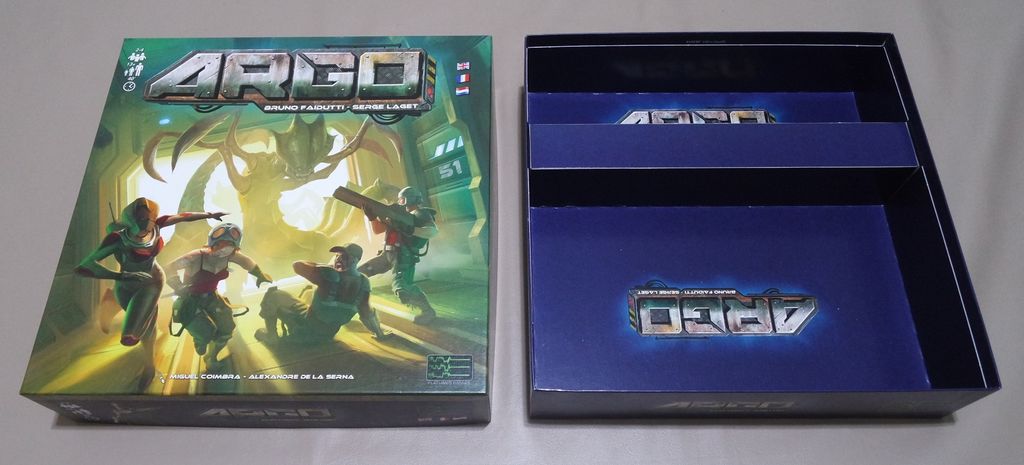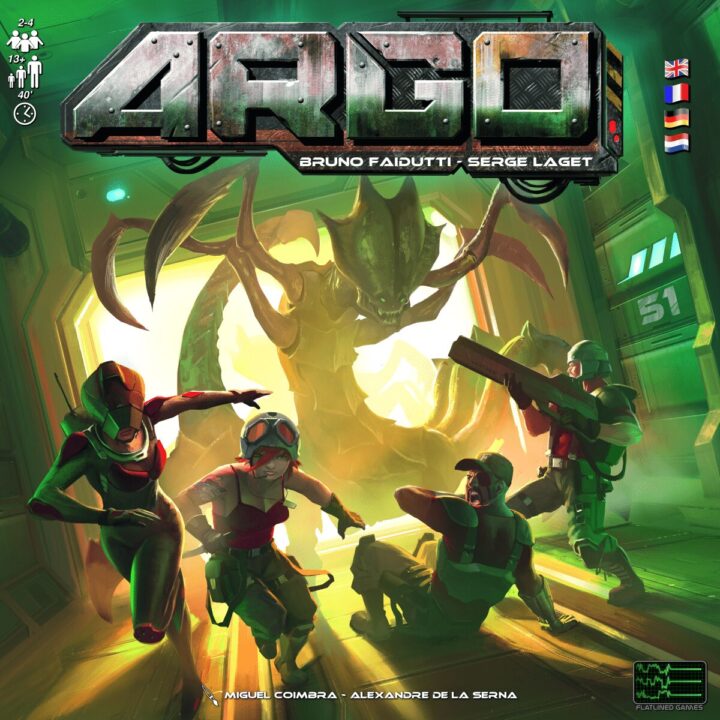Welcome to the review of Argo, the board game that mixes cooperation with a touch of deception. Gather your friends, because this game features a modular board, strategic mechanics, and replayability that will keep you and your crew coming back for more. But beware! Luck can be an unruly beast here, occasionally throwing a wrench in your best-laid plans. Let’s see how Argo fares in our cheerful yet honest critique.
How It Plays
Setting Up
First, gather your fellow space adventurers… or should I say, frenemies? Lay out the modular board, which changes every playthrough. Everybody gets a character card, aligning you with either humans or robots, and then place the tokens on the board. Remember, it’s all about escaping the space station alive!
Gameplay
Each turn, players move their characters through the station, collecting evacuation tokens or setting traps for others. But don’t forget, there’s a twist! You might need to switch allegiances midway. So, keep your endgame strategy flexible—it’s like herding space cats.
Winning the Game
Victory goes to those who escape without getting vaporized or left behind. Your team wins if more of you escape than the other team. So, buddy up—or double-cross wisely. Just don’t blame me if your pals glare at you across the table!
Want to know more? Read our extensive strategy guide for Argo.
Exciting Gameplay Mechanics and Rules in Argo
Argo is one board game that doesn’t just sit on the table; it leaps off and grabs you with its unique gameplay mechanics! The premise is pretty nifty. You’re stranded on a mining station that’s about to explode, and your only hope is to evacuate swiftly. Sounds easy, right? Well, hold your horses, partner. Because in Argo, evacuating is no cakewalk, and you can’t trust anyone for pacing themselves nicely.
The first thing you notice about Argo is its modular board, which makes each game as unique as my Aunt Gladys’ unpredictable potluck dinners. The tiles are flipped over and placed throughout the game, creating a station that looks different every time. This modularity keeps the game fresh and the players on their toes. The objective is to navigate your crew to the escape pods, all while avoiding the pesky aliens who think you’re their next meal. Good luck with that!
Strategy and planning play a vital role in mastering Argo. Players must carefully balance their crew’s movement and actions. But here’s the catch: you’re not just thinking about survival; you’re also strategizing to ensure the other players don’t beat you to the escape pods. Perhaps the most thrilling aspect is that sometimes you might need to sacrifice a crew member to lure aliens away, a mechanic I found nervously entertaining!
But let’s face it: like any game, Argo isn’t perfect. While the mechanics are exciting, there’s always a point where Lady Luck decides to crash the party. If luck isn’t your best friend, you might find yourself yelling at the board more often than expected.
In my next section, I’ll let you in on a little secret about player interaction and dynamics that will leave you wanting more. Hang tight!

Exploring Player Interaction and Dynamics in Argo
In Argo, the player interaction is similar to a chaotic dance party where everyone is trying not to step on each other’s toes. With spaceships, that is. My pals and I discovered that teamwork here is both essential and slightly sneaky! In this game of survival, you need to collaborate to evacuate astronauts, yet each player may have their own secret agenda. Trying to save the most astronauts, while throwing opponents under the metaphorical bus (or spaceship, in this case), adds a deceptive layer to our game nights.
Imagine you’re trying to align an escape route, but your buddy Steve decides that opening an airlock into deep space might spice things up. You can only laugh as plans crumble. Argo’s design encourages banter and a fair bit of plotting. It almost feels like a reality TV show set among the stars. Who will make the cut? Who will be left floating? The social interactions are as exhilarating as the game’s escape attempts themselves.
Negotiation and persuasion are as important as strategic maneuvering. Need someone to help block an alien? Better make it worth their while! Alliances form and self-interests clash, but every victory feels personal. While some argue this breeds chaos, I argue it creates a tapestry of memorable moments. Steve may have opened the airlock, but who doesn’t love a bit of drama? Next time, we’ll discuss the game’s replayability and variety, which is like opening a new chapter of an unexpectedly space-thrilled diary. Stay tuned, folks!
Replayability and Game Variety in Argo
Let’s face it, no one wants a game that gathers dust on the shelf after one play. Thankfully, Argo isn’t one of those. The game offers a pretty solid replayability factor, keeping us coming back for more. You see, the magic lies in its modular board. Each game session in Argo feels fresh and dynamic, as the tiles can be rearranged to form new space stations. This means that every time you start a game, it’s like you’re entering an entirely different universe – cue the space puns!
Now, let’s talk variety. Argo spices things up with its diverse missions and scenarios. Players must constantly adapt and strategize, as the objectives can change drastically. This variety keeps even experienced players on their toes. I remember one game night where I thought I had it all figured out, only to be outsmarted by my friend’s clever move. Talk about an epic plot twist!
While Argo is more about strategy than luck, it still offers enough unpredictability to keep things interesting. Balancing missions, outmaneuvering opponents, and avoiding those pesky aliens provide endless opportunities for creative plays. Imagine my surprise when my cautious strategy turned into an opportunistic space escape!
If you’re someone who enjoys games that challenge you differently each time, Argo delivers. There’s always a new challenge waiting, making sure boredom never sets foot in your gaming galaxy.
Next up, let’s talk about something that can make or break a game: Component quality and design. Ready to blast off into that conversation?
Component Quality and Design in Argo
Let me tell you about the time my dog decided to test the durability of Argo’s components. Spoiler: Argo passed the test. The first thing you’ll notice when opening the box is how sturdy and well-designed everything is. The game comes with a bunch of colorful tokens and astronaut miniatures that are not only pleasing to look at but feel robust enough to withstand an overenthusiastic game play session or an unfortunate dog encounter.
The modular board tiles have a nice thickness to them, ensuring they don’t warp easily. I’ve bent a few in my day, usually when trying to prove a point to my board-gaming friends about the need for strategy over luck. Thankfully, Argo stood its ground. The board design features cool sci-fi elements with intricate details, making the game both visually appealing and thematically immersive.
I particularly love the attention to detail. The designers of Argo thought about the little things that make unboxing and playing feel like an adventure. Each component seems to have been carefully crafted to enhance the player’s experience. The distinct colors are vivid, which helps when trying to explain the game after you’ve had one too many late-night coffee runs.
Overall, the quality and design of Argo’s components definitely help justify the investment. Whether you’re a board game aficionado or a casual player, you want pieces that last longer than your latest gaming binge. With that in mind, I’d recommend bringing Argo into your collection. Just make sure to keep your pets at a safe distance.
Conclusion
Argo is a fun mix of strategy and player interaction with a twist of luck. Its modular board and varied missions keep players coming back for more. The high-quality components make it a standout on the table. However, the luck element might disrupt your grand designs at times. If you don’t mind a bit of unpredictability, Argo is a solid addition to any board game collection. This concludes our review. Happy gaming!


